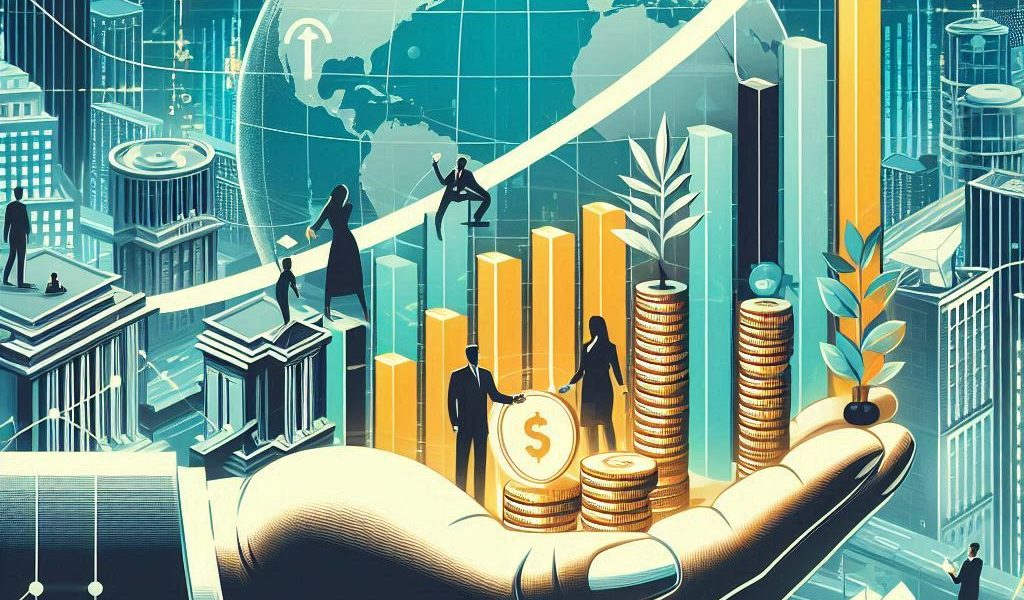Government spending plays a critical role in shaping the trajectory of economic recovery, especially during challenging times like recessions, financial crises, or global pandemics. When economies slow down, strategic fiscal policies and public expenditures can serve as catalysts for revitalizing growth and creating opportunities for investors.
In this blog, we’ll explore how government spending impacts economic recovery, the key sectors it influences, and how investors can position themselves to benefit from these shifts.
1. Understanding Government Spending
Government spending refers to expenditures by federal, state, or local governments on goods, services, infrastructure, and social programs. During periods of economic slowdown, governments often increase spending to stimulate demand, create jobs, and support businesses. This is commonly referred to as fiscal stimulus.
Types of Government Spending:
- Public Infrastructure: Roads, bridges, and public transport.
- Social Programs: Healthcare, education, and unemployment benefits.
- Defense and Security: Military and defense-related expenditures.
- Grants and Subsidies: Financial aid to businesses or individuals.
Key Takeaway: Strategic government spending injects money into the economy, boosting demand and facilitating recovery.
2. How Government Spending Stimulates Economic Recovery
A. Boosting Aggregate Demand
When governments invest in infrastructure or social programs, it creates jobs and increases disposable income. This, in turn, boosts consumer spending, a critical driver of economic recovery.
For example, during the 2008 financial crisis, massive stimulus packages such as the American Recovery and Reinvestment Act in the U.S. injected funds into the economy, accelerating recovery efforts.
B. Supporting Key Sectors
Government spending often targets industries most affected by economic downturns. For instance, during the COVID-19 pandemic, many governments supported sectors like healthcare, small businesses, and technology. This targeted spending creates opportunities for investors to tap into growth sectors.
C. Long-Term Economic Benefits
Investments in infrastructure and education not only stimulate short-term recovery but also lay the foundation for long-term economic growth. Improved infrastructure reduces business costs, while better education enhances workforce productivity.
Key Takeaway: Government spending stimulates both immediate recovery and long-term growth by addressing structural challenges and boosting demand.
3. Investment Opportunities During Fiscal Stimulus
As governments ramp up spending during economic recovery, certain sectors present lucrative opportunities for investors:
A. Infrastructure Development
Spending on roads, bridges, and energy projects benefits construction companies, raw material suppliers, and engineering firms. Investing in infrastructure-focused ETFs or stocks can yield strong returns during these periods.
B. Renewable Energy
Many governments are prioritizing green energy projects to drive recovery while addressing climate change. This opens opportunities in solar, wind, and electric vehicle (EV) sectors.
C. Technology and Innovation
Government funding for research and development often accelerates growth in technology sectors, including artificial intelligence, 5G, and biotechnology.
D. Small Business Support
Programs offering grants and subsidies to small businesses can drive growth in local economies. Investors can explore opportunities in small-cap stocks or community-focused investment vehicles.
Key Takeaway: Monitoring government budgets and policy announcements can help investors identify sectors poised for growth.
4. Challenges and Risks of Government Spending
While government spending plays a crucial role in recovery, it’s not without challenges:
- Debt Levels: Excessive borrowing to fund spending can lead to high public debt, potentially impacting long-term economic stability.
- Inflation Risks: Overstimulating the economy may lead to inflation, reducing purchasing power.
- Inefficiencies: Poorly planned projects or corruption can limit the effectiveness of spending.
For investors, understanding these risks is essential to making informed decisions.
5. Case Studies: Successful Government Spending Initiatives
A. The New Deal (1930s)
During the Great Depression, the U.S. government launched the New Deal, focusing on infrastructure, employment, and social programs. This initiative played a pivotal role in reviving the U.S. economy.
B. Post-WWII Reconstruction (1945-1950s)
In Europe, the Marshall Plan, funded by the U.S., rebuilt war-torn economies, creating a period of rapid economic growth.
C. COVID-19 Stimulus Packages (2020)
Globally, governments introduced large stimulus packages to support businesses and individuals, helping economies bounce back from the pandemic-induced recession.
Key Takeaway: Historical examples highlight how well-executed government spending can lead to economic recovery and create investment opportunities.
6. How Investors Can Stay Ahead
To capitalize on government spending during economic recovery, investors should:
- Monitor Fiscal Policies: Stay updated on government budgets, stimulus packages, and infrastructure plans.
- Diversify Portfolios: Focus on sectors receiving significant government support, such as renewable energy, healthcare, or technology.
- Explore ETFs: Consider exchange-traded funds (ETFs) that focus on infrastructure, green energy, or other targeted sectors.
- Think Long-Term: Investments in government-backed projects often yield steady, long-term returns.
Key Takeaway: Staying informed and aligning investments with government priorities can lead to significant financial gains.
Conclusion: Government Spending as a Catalyst for Growth
Government spending is a powerful tool for economic recovery, addressing both short-term challenges and long-term opportunities. For investors, understanding fiscal policies and aligning with government-backed initiatives can unlock lucrative opportunities. By staying informed and proactive, you can not only safeguard your investments but also thrive during periods of economic recovery.




